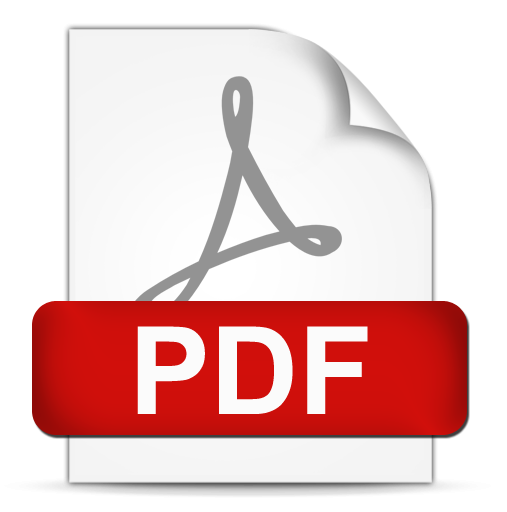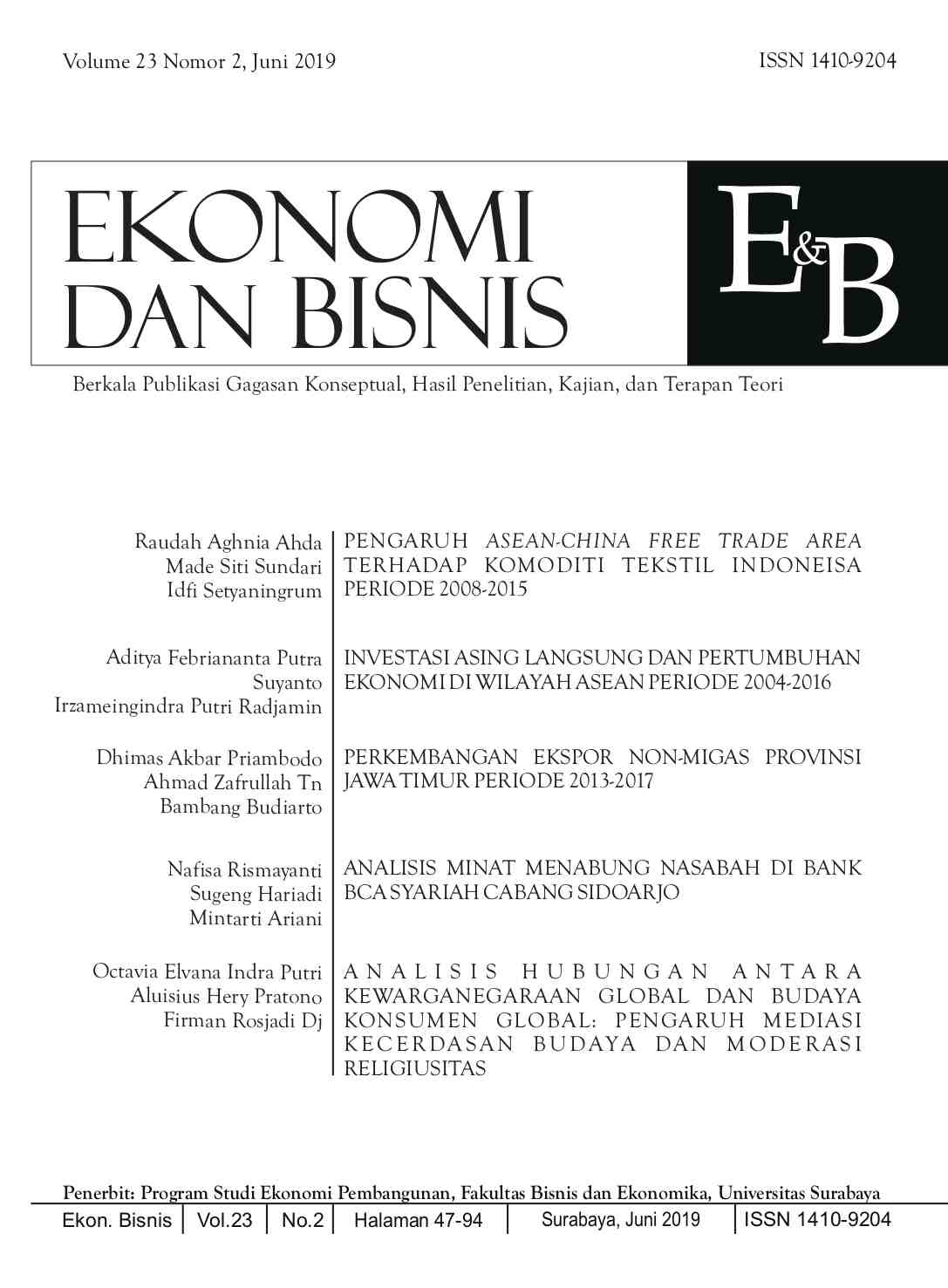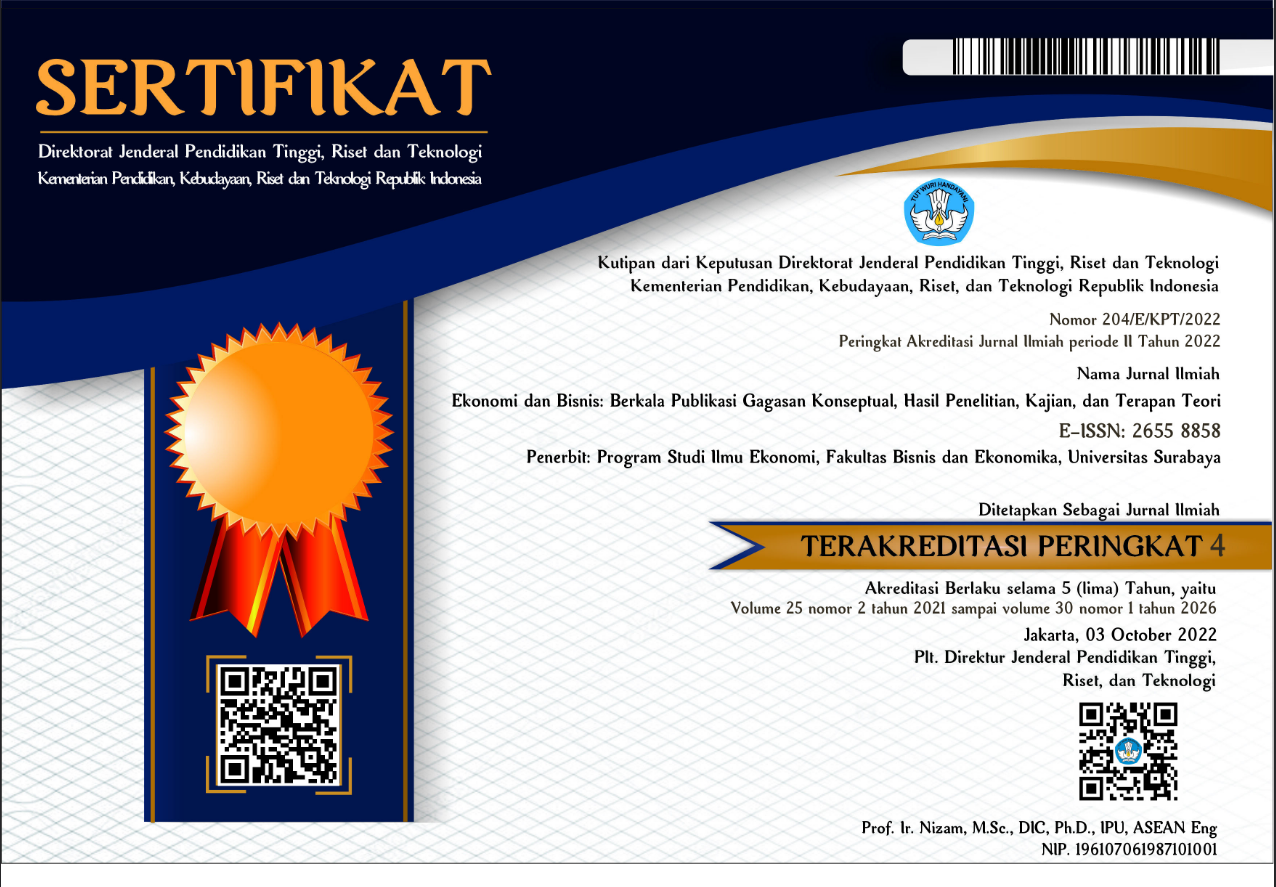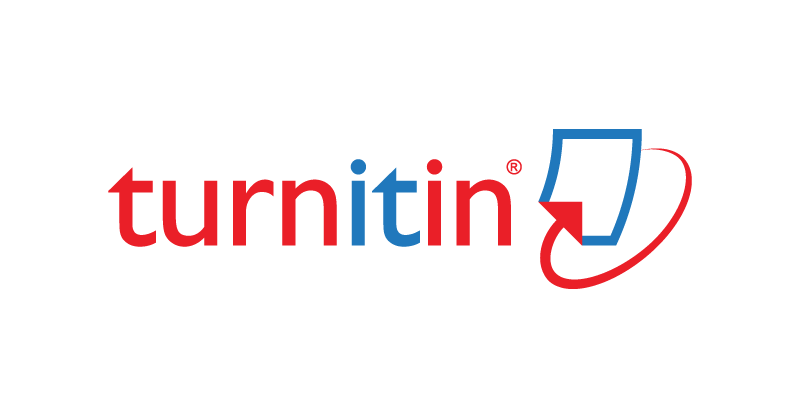PENGARUH ASEAN-CHINA FREE TRADE AREA TERHADAP KOMODITI TEKSTIL INDONEISA PERIODE 2008-2015
 Abstract Views:
1020 times
Abstract Views:
1020 times
 PDF Downloads:
637 times
PDF Downloads:
637 times
Abstract
This study aims to determine whether there is different value between exportand import performance before ACFTA and after ACFTA by developing hypothesis from the previous studies. To test the proposed hypothesis, this Study employed the independent samples t-test with data from the World Bank database. The case study was carried out with concern on textile business between Indonesia and China. The results indicate that the exports value has different mean following the free trade agreement. Similar result occurs at the import value of textile from China toIndonesia.
Downloads
References
Amir, 2010. Kontrak Bisnis Ekspor-Impor. Jakarta: PPM Manajemen. Amir, 2013, EksporImpor, Jakarta PPM Management
Purnamawati, Astuti dan Sri Fatmawati. 2013. Dasar-Dasar Ekspor Impor. Teori, Praktik, dan Prosedur. Edisi Satu. Yogyakarta: UPP STIM YKPN.
Andri Feriyanto, Perdagangan Internasional: Kupas Tuntas Prosedur Ekspor Impor. Jakarta
Marolop Tandjung, 2011, Aspek dan Prosedur Eksport-Import, Jakarta Hady, Hamdy, 2009, Ekonomi Internasional: Teori dan Kebijakan Perdagangan Internasional, Jakarta: Ghalia Indonesia
Krugman, Paul dan Obstfeld, 2002, Ekonomi Internasional Teori dan Kebijaksanaan, diterjemahkan oleh: Faisal H. Basri, Jakarta: Rajawali Press.
Baron Hidayat, Fatma Indriani, Muliadi, 2015, Implementasi Indepentdent t test Pada Aplikasi Pembelajaran Multimedia Ragam dan Gerak Seni Tari Daerah Kalimantan Selatan, FMIPA UNLAM, Kalimantan Selatan
Christie N. J. Maramis, 2013, Analisis Pertumbuhan ekonomi, Konsumsi, Investasi, dan Ekspor Neto di Indonesia dan Sulawesi Utara Sebelum Dan Sesudah Krisis Finansial Global Tahun 2008, Universitas Sam Ratulangi, Manado.
Sullivan Arthur, M. sheffrin steven, Economics principal in action, 2003 Pearson Education inc: Boston
Annisa R, Suhadak, dan Rosalita,2016, Pengaruh Asean-Chia Free Trade Area terhadap Ekspor dan Impor Indonesia-Cina, jurnal adminstrasi bisnis, Universitas Brawijaya: Malang (https://media.neliti.com/media/publications/87403-ID-pengaruh-asean-china-free-trade-area- ter.pdf)
Fairus, Lilis, dan Agus Luthfi, 2017, Analisis Integrasi Ekonomi Indonesia- China Terhadap Perekonomian Indonesia (sebelum dan sesudah ACFTA), Journal of Research in Economics and Management (67-153-1-PB.pdf)
Yola Velinda dan Suhadak, 2017, Pengaruh ASEAN-China Free Trade Agreement (ACFTA) terhadap Ekspor Komoditi Kelapa Sawit dan Karet Alam Indonesia
Raudah Aghnia Ahda, Made Siti Sundari, Idfi Setyaningrum ke China, Jurnal Administrasi Bisnis https:// media. neliti.com/ media/ publications/ 87759-ID-pengaruh- asean-china-free-trade-agreemen.pdf
World Integrated Trade Solution (https://wits.worldbank.org/ CountryProfile/en/Country/IDN/StartYear/2008/EndYear/2015/TradeFlow/Import
/Indicator/MPRT-TRD-VL/Partner/CHN/Product/ Textiles).
Diakses april 2018.Raudah Aghnia Ahda, Made Siti Sundari, Idfi Setyaningrum55

 DOI:
DOI:















